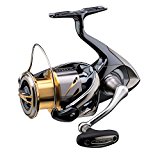Peacock Bass Fishing
Have you ever heard of the Peacock Bass? If the answer is no, then you’re missing out. The peacocks are like no other fresh water fish in terms of ferocity and fight with only the largemouth bass coming close.
There are currently 6 species of Peacock Bass and only 3 of them have English names. This is due largely because
1. they’re native to South America, and
2. to a large degree because they’ve remained relatively unknown outside of South America.
The peacock is not a bass at all and hardly resembles a peacock, well fish and birds do not have a lot in common now do they? However the name has stuck and has good marketing power in both North American and South America. In Spanish speaking countries, the name pavon is used, which also means peacock. In Portuguese countries like Brazil, it is called a tucunare.
6 major Species of Peacock Bass
- Cichla temensis
- Cichla ocellaris
- Cichla intermedia
- Cichla orinocensis
- Cichla monoculus
- Cichla pinima
The Cichia temensis is known as the Speckled Peacock Bass for most of the year, but when it’s time to spawn, it’s sides change with several bars running from top to bottom. During this time, it’s called the Stripped or Black-Stripped Peacock Bass. While native to South America, it was recently introduced to Florida, though by all reports, it hasn’t taken off. This is a large fish, with the largest on record reaching 27 lbs and great expectations that there are 30 pounders ready to be caught. The average size caught is often in the 20lb range.
The Cichia ocellaris is know as the Butterfly Peacock Bass. It’s well known for bass anglers who have visited Florida as it is one of the top game fish next to the largemouth bass. In fact, Florida is one of the best bass fishing grounds in the world offering a large variety of bass. The Butterfly Bass was introduced to North American in the 1950s and has taken off quite well and is often found in the same habitat as largemouth bass, offering for an exciting fishing experience.
The Cichia internedia is known as the Royal Peacock Bass and the Blackstripe Peacock Bass. It’s the smallest of the peacock bass rarely reaching more than 10 lbs, the record being 12 lbs.
The Cichia orinocensis, Cichia monoculus and the Cichia pinima do not have English names and the Cichia pinima was only discovered recently in 2006, which explains why some sources still refer to there being only 5 types of Peacock Bass.
All peacocks are aggressive and strike at the lure with brute force, taking off hard with the fighting not letting up until it’s brought up into the boat. Be prepared for a long hard fight. Carry extra gear including rods and reels as these fish can make short work of any tackle if they’re not used properly. Failure to set the drag properly can result in snapping the line instantly or having the rob yanked out of your hands.
For any bass angler, catching a peacock is a must. Once you have fished for peacocks, it will be something you’ll want to fish for year after year. For North American residents, Florida offers an inexpensive and accessible place to fish for peacocks. It also offers a large array of other freshwater fish including many top sport fish like largemouth and Suwannee. They will provide a challenge of a lifetime second only to offshore fishing like fishing for Marlins.


